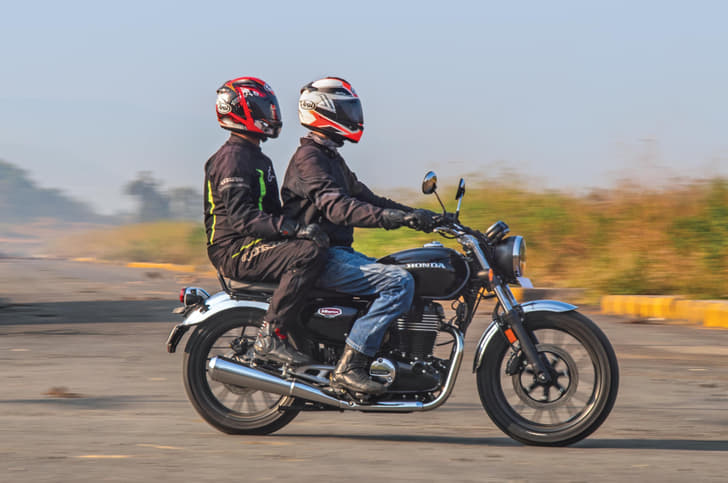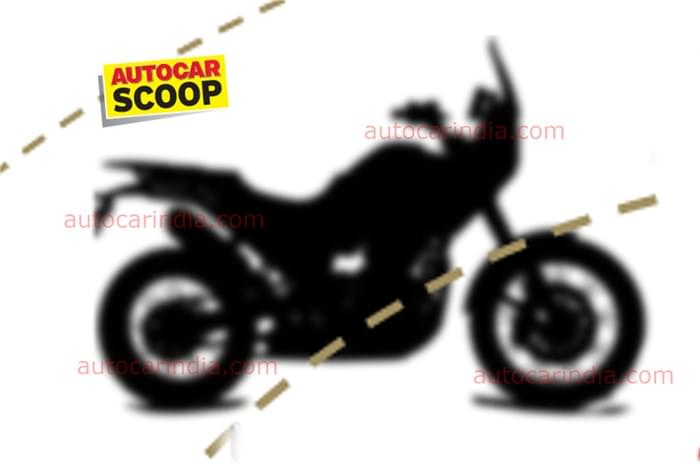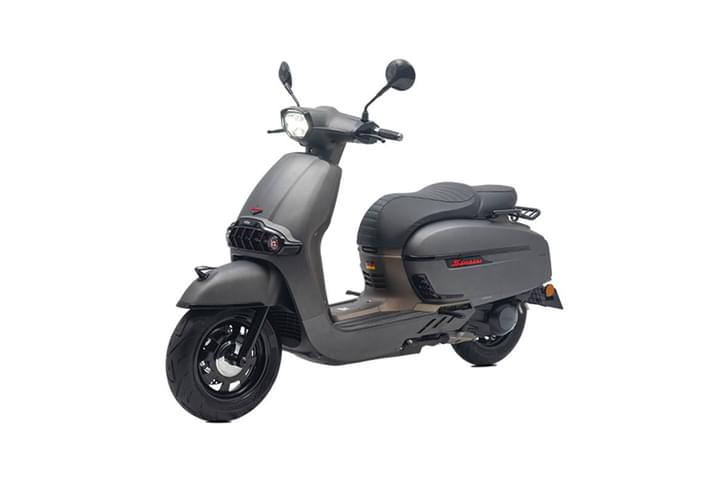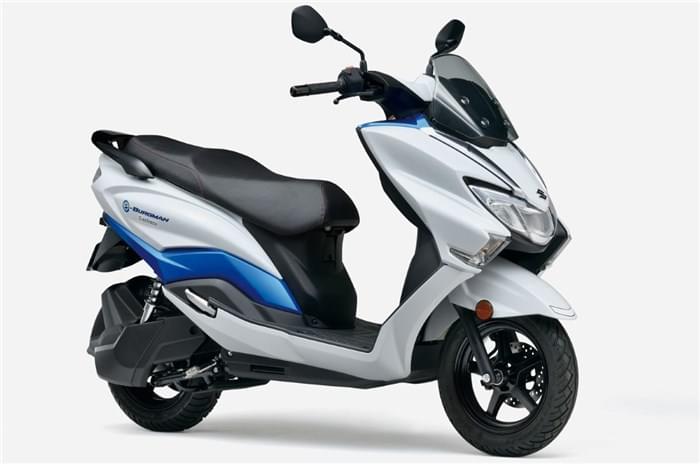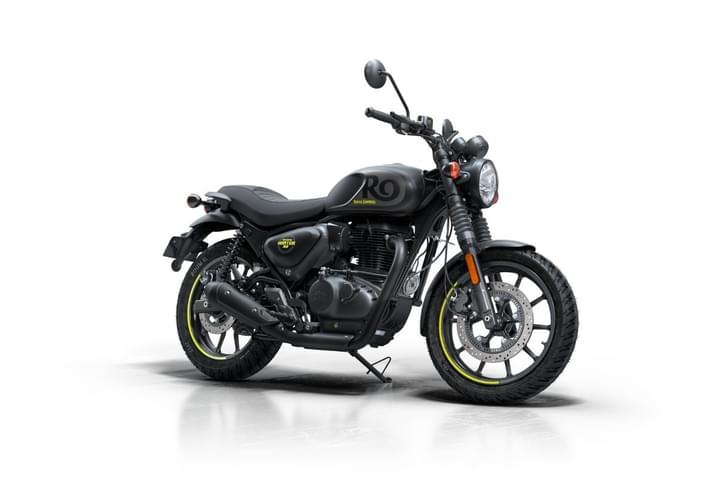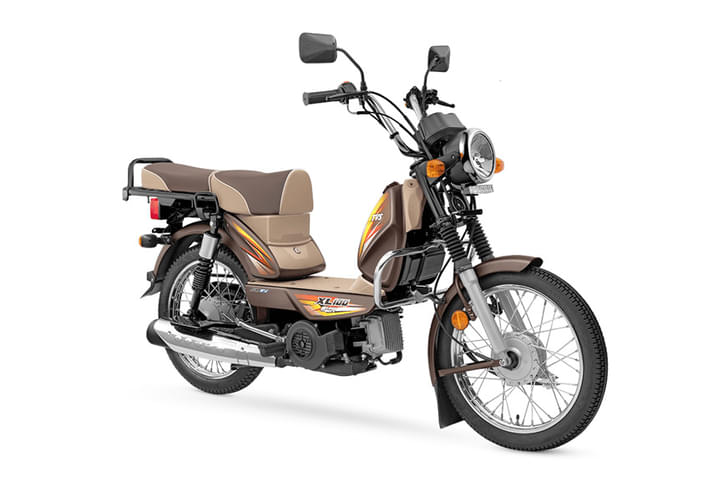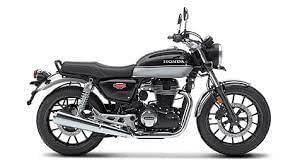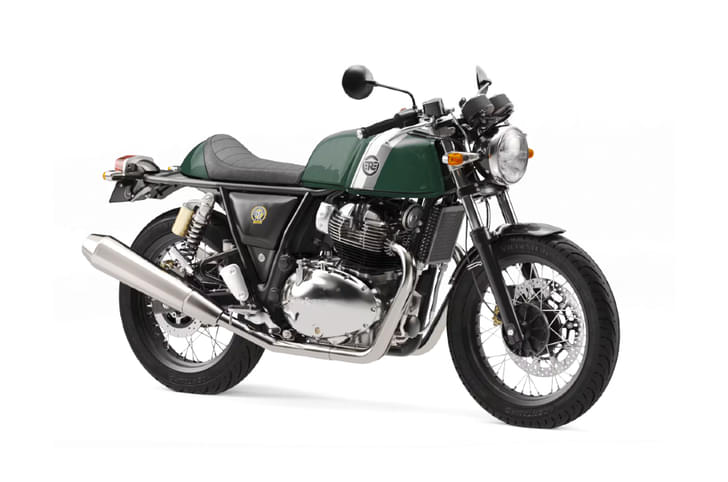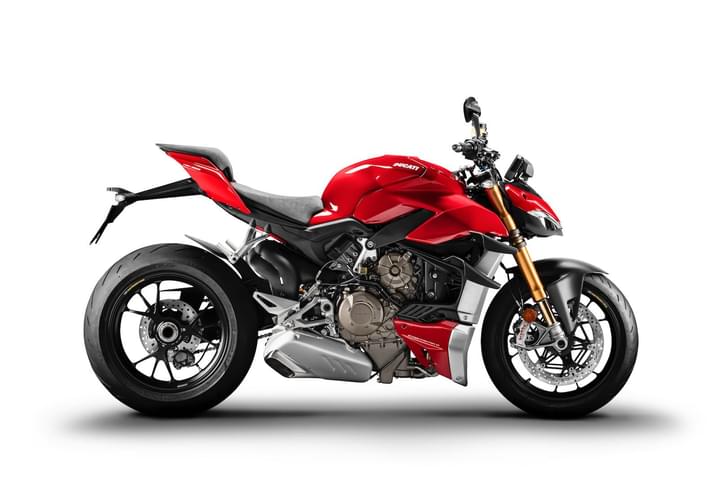UPDATE: Yamaha FZ25, FZS 25 prices slashed by almost Rs 20,000
Up until a few years ago, a fast, fun, yet decently frugal (quite the buzzword these days, no?) 250cc street naked was a rarity, but in recent times, the segment is picking up steam faster than ever before. You see, quarter-litre street naked motorcycles straddle the fine line between offering performance and practicality, and so far, the Suzuki Gixxer 250 has occupied the sweet spot when it comes to bang for the buck. But Yamaha has struck back in 2021 with an updated FZS25, and this comparison has become even more relevant since the FZS25 is now priced very close to the Suzuki. Time for these two to draw their Katanas.
STREET CRED
What’s a street naked without an aggressive design? And these motorcycles have enough of it to fit the street fighter bill.
I remember watching Firoze turn up at the shoot location on the Yamaha FZS25, and I instantly liked its subtle design updates, as well as the colour combination. In fact, we have to give it to Yamaha for injecting a big dollop of appeal into what is essentially a 2017 model.
Yamaha has got the dark green shade spot on and it contrasts very well with the dull gold wheels that look even better in motion, although the bright gold detailing in the graphics is a little tacky. The FZS25’s new LED projector headlamp and DRL looks more aggressive – and more importantly, it finally works decently as well. That, along with the raked visor, lends it proper street fighter aggression. We also liked the addition of hand guards on the handlebar, which not only serve an aesthetic role but also deflect wind and keep your fingers warm on a cold morning. Besides these changes, the rest of the motorcycle, from the fuel tank to the tail section, is visually the same, and I think the FZS25 continues to look like a proportionate and handsome motorcycle.
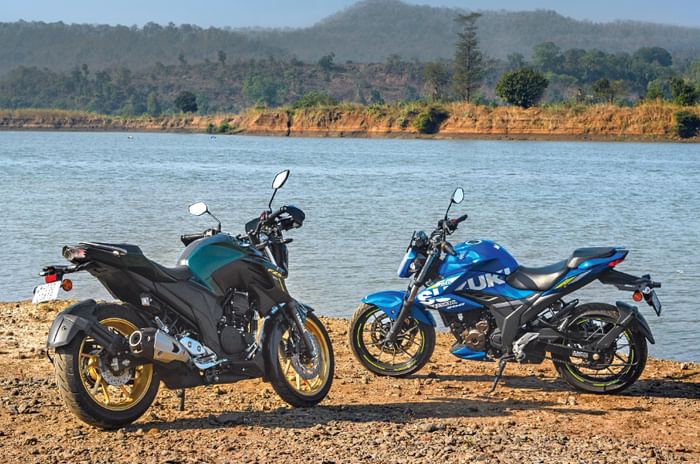
The Suzuki Gixxer 250, on the other hand, looks a lot more athletic, with tighter lines and sharp creases, doing away with any unnecessary visual bulk. It appears noticeably smaller in relation to the muscular looking FZS25. The Suzuki’s taut lines, along with the MotoGP machine-inspired livery, make it instantly attractive, especially when viewed from the rear three-quarter with its raised tail section and neatly integrated LED tail-light.
On the whole, both motorcycles look equally attractive and manage to turn heads on account of their striking designs. They are also very well put together, as you’d expect of a Japanese motorcycle, but we have to admit that certain parts, such as the switchgear, plastic tank extensions and levers, on the Suzuki feel higher grade than those on the Yamaha.

In terms of features, the FZS25 gets LED indicators and real-time fuel consumption data on its tiny reverse-LCD display. However, the unit looks pretty dated and it is about time Yamaha replaced it with something bigger and modern. The Suzuki’s LCD display looks nicer but doesn’t offer anything more than the usual information. Both manufacturers should have graduated to Bluetooth-enabled clusters, considering today’s times.
STREET WARS
While both motorcycles have appealing looks, the real test was in the way they performed. This is where I was super confident that the Suzuki Gixxer 250 would smoke the Yamaha FZS25, given its obvious advantages on paper, but the reality turned out to be something else.
| Specifications | |||
|---|---|---|---|
| Yamaha FZS 25 | Suzuki Gixxer 250 | ||
| Price (ex-showroom, Delhi) | Rs 1.57 lakh | Rs 1.67 lakh | |
| Engine | 249cc | 249cc | |
| Power | 20.8hp at 8000rpm | 26.5hp at 9300rpm | |
| Torque | 20.1Nm at 6000rpm | 22.2Nm at 7300rpm | |
| Power to weight | 135.06hp/tonne | 169.87hp/tonne | |
| Wheelbase | 1360mm | 1340mm | |
| Ground clearance | 160mm | 165mm | |
| Kerb weight | 154kg | 156kg | |
| Seat height | 795mm | 800mm | |
| Fuel tank | 14 litres | 12 litres | |
| Front suspension | Telescopic fork | Telescopic fork | |
| Rear suspension | Monoshock | Monoshock | |
| Front brake | 282mm disc | 300mm disc | |
| Rear brake | 220mm disc | 220mm disc | |
| Tyre size (front) | 100/80-17 | 110/70-R17 | |
| Tyre size (rear) | 140/70-17 | 150/60-R17 | |
You see, the relatively simple two-valve Yamaha makes around 5hp and 2Nm less than the Suzuki’s four-valve engine, but in our acceleration tests, the Yamaha is in the lead, up to 60kph. The engine’s stronger bottom and mid-range helps it in initial acceleration, and we also found the Yamaha to be more tractable in the city, making it the easier commuting tool.
But once we got out of town and onto the highway, the Suzuki’s engine truly came into its own. It loves to be revved and there is a noticeable surge in acceleration as the rev bar crosses 3,000rpm and runs to the limiter that sits beyond 10,000rpm. The in-gear acceleration feels noticeably stronger, probably because the Suzuki’s 6-speed gearbox has closer packed ratios.
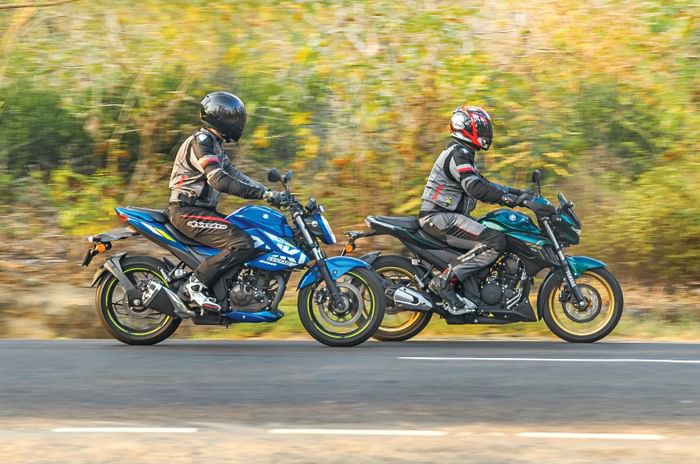
The extra horses also make themselves apparent on wide, open roads and it comes as no surprise that the Gixxer is almost a second quicker to 100kph than the FZS25. It also manages to hit a higher top speed, and I could see Firoze on the Yamaha become a spec in the mirror of the Suzuki whenever we encountered an empty stretch on the highway. Clearly then, if you are looking for outright performance, the Suzuki is still the one to go for. In fact, its sixth gear is tall enough for relaxed cruising at three-digit speeds and this is where the Yamaha’s 5-speed gearbox makes you wish for another gear.
The Yamaha’s engine feels notably busier at speeds beyond 100kph, accompanied with amplified vibrations and that robs it of some serious touring abilities. Also, the higher RPMs at cruising speeds have an impact on fuel economy, and we weren’t surprised to see that the FZS25 consumes more fuel than the Gixxer 250, both in the city and on the highway.
SLICING THROUGH
Once off the highway, we found ourselves on a smooth and winding piece of tarmac that both of us had never been on. It then goes without saying that the stability and confidence offered by the chassis on both motorcycles is the reason why we could ride hard without any doubts in our head.
The Yamaha feels stable and predictable. It is one of those motorcycles that remains extremely forgiving if you were to overcook a corner. Its softer suspension setup also soaks up mid-corner bumps quite well, and the overall ride quality is skewed towards comfort.
| Performance and fuel efficiency | ||
|---|---|---|
| Yamaha FZS 25 | Suzuki Gixxer 250 | |
| 0-60kph | 3.69s | 3.7s |
| 0-100kph | 10.14s | 9.24s |
| 20-50kph | 2.58s | 2.71s |
| 30-70kph | 4.75s | 4.70s |
| 50-80kph | 4.82s | 4.60s |
| 60-0kph (braking) | 15.75m | 16.48m |
| City (fuel efficiency) | 36.06kpl | 38.86kpl |
| Highway (fuel efficiency) | 39.81kpl | 43.26kpl |
But, if you are looking for a more connected feeling in the bends, the Suzuki Gixxer is hands down the one that offers more lucid feedback. Its sportier chassis, firmer suspension and radial tyres come together to give you more feel and confidence. You are always carrying more corner speed than the Yamaha, whether it’s a switchback or a sweeping corner. You also sit in a slightly forward-biased position, as opposed to the FZS25’s more upright riding stance, and that puts you in the mood to attack! However, I wish both bikes offered slightly stronger bite from their front brakes. Although the Suzuki’s brakes offer better feel, it’s the Yamaha that stops in a shorter distance when you deploy the anchors at 60kph.
FINAL STRIKE
The Yamaha FZS25 will comfortably play the role of an everyday commuter, while looking quite stylish in the office parking lot. Its relaxed ergonomics, spacious seat and friendly nature will also appeal to those who are graduating from 125-150cc motorcycles. And while its engine offers good performance in the city, a sixth cog and a little more power would have made it a fantastic touring machine – an all-rounder if you will. This engine platform is effective but it’s also showing its age; an upgrade here would seriously take the fight to the Suzuki. That said, it is also the cheaper motorcycle here, so those with tight purse strings will be happy in some way.
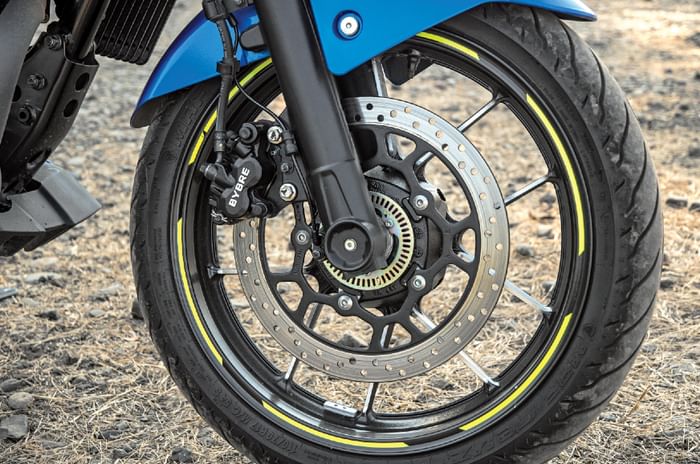
But, if you are willing to stretch your budget by Rs 10,000, the Suzuki Gixxer 250 is well and truly worth every penny. It’s not quite as comfy a commuter as the Yamaha, but it makes up for it with a sportier and engaging ride, while being the more premium and feature-packed machine. This is the bike for the enthusiast who wants an all-rounder that will also plaster a wide grin on the face. The Yamaha runs it close, but the Gixxer remains our choice for a fun, practical and relatively affordable 250cc machine.





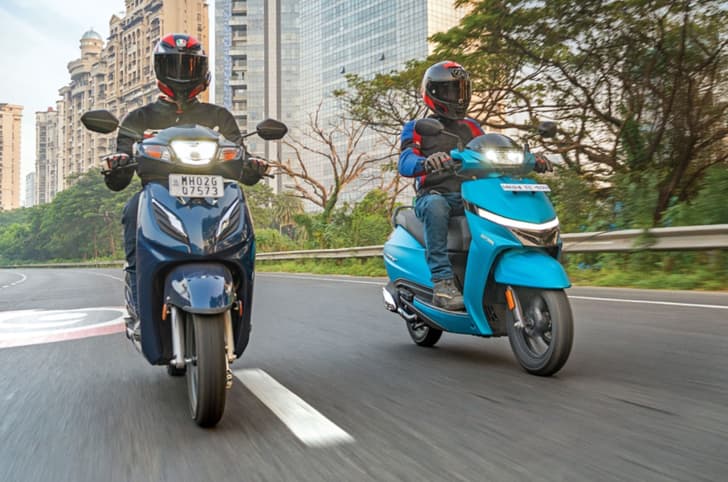






.jpg?w=728&q=75)
